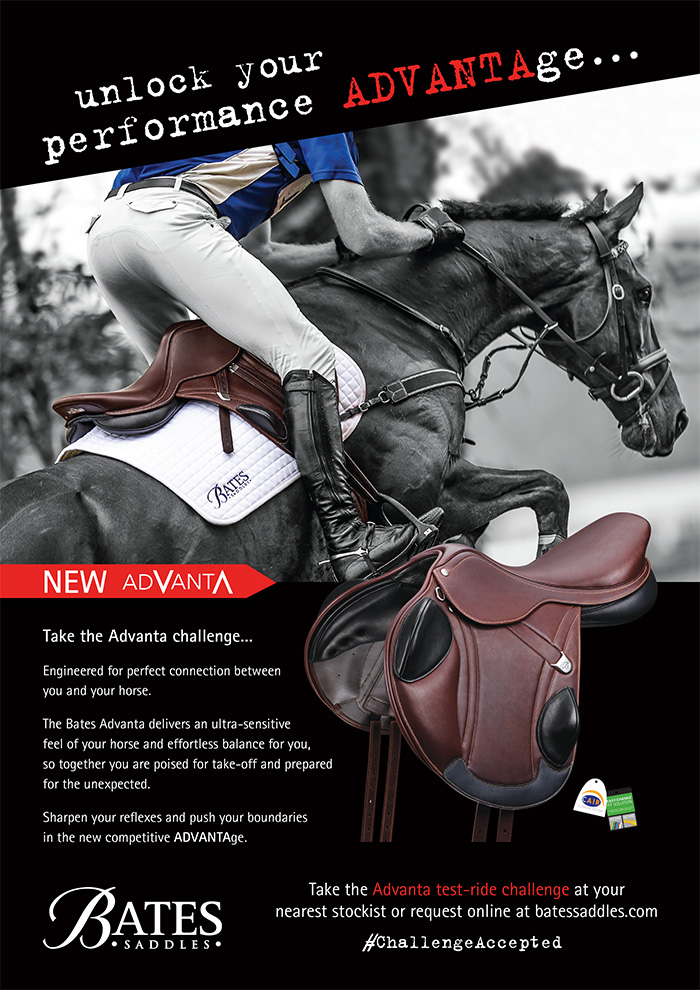story – Chris Hector pix – Barry 0’Brien and Roz Neave
Back in 2004, we heard that Matthew Ryan was coming to Adelaide Three Day Event to compete in the CIC, so we thought it would be a good idea to match him up with a promising young rider. Matt could mentor the rider through the event and then in the following week we could have a de-brief and a lesson for the rider. Natalie Davies was the candidate.

For Natalie, her first Adelaide 3DE was always going to be a big challenge, but after a great season in Victoria with I three of her horses, Nat was quietly confident about her chances on Abel Rex in the CIC***:
“I really wanted to finish in the top ten – I thought the horse could do it. I knew he was going the best he had ever gone, jumping and on the flat. I thought the challenge was to produce that in the Adelaide four-star environment.”
“When we arrived it was pretty scary. There were lots of professional riders everywhere, all the names, it was quite intimidating but I was quietly confident my horse could match it with all of them. The dressage test was the best he can do – he did the best test he has ever done at a competition. He got a little tired as the test went on because it was hot but it was the best he has done and I probably rode him the best I have done. I was really happy.”
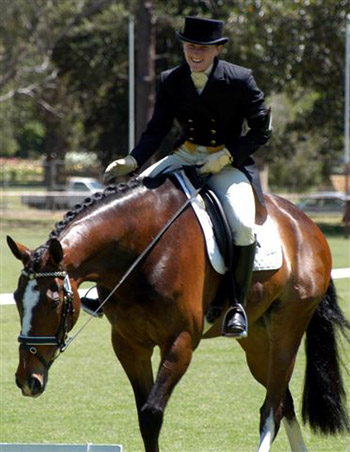
“On the cross country he was just a super star. I never thought the horse had three-star in him until I rode round Adelaide. He saved me a couple of times. He just lined everything up and went for me. He’d land and gallop, he never seemed to tire – he was just a champion.”
“I was really disappointed after the show jumping where I had four rails. Had you said to me a year ago, you can finish in the top ten at Adelaide, I would have been really happy with that result – but to come so close is such a disappointment. Eighth is still not too bad in the scheme of things, but it was a disappointment. I was pretty upset about having it all come to grief.”
So after Natalie made the top 10 at Adelaide,we asked triple Olympic gold medallist, Matt Ryan to meet up with her the following week to review what had happened. Matt asked Natalie to bring her video of her dressage test with her, so they could sit down and discuss it before they had a working session:
“When I was working with Nat one of the things I was working on with her, was rhythm – particularly in her lateral work. When I was watching her practice the day before the test, she was definitely backing off, slowing down in her lateral work, and I tried to encourage her to think more forward, to try and keep a better, more regular forward rhythm.”
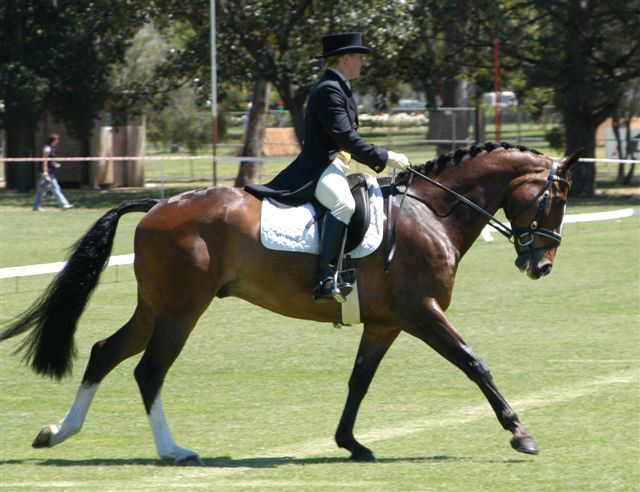
“I wanted her to have the thought that at any stage, be it in shoulder in, travers, working trot on a ten metre circle, she could think medium and be floating off into medium. You don’t want to have the feeling that it would take a bit of a windup to get you to medium trot.”
“The danger in thinking more forward is there, when Nat went into the travers right in the test, the horse thought about going up into the canter. The aids for travers are very similar to canter, and because Nat was thinking a touch more forward in her test at Adelaide, he misunderstood and thought she wanted a canter transition. That wouldn’t happen in time. Once the horse becomes familiar with you being more forward in the trot and the lateral work, then he won’t mistake the travers aid for a canter aid.”
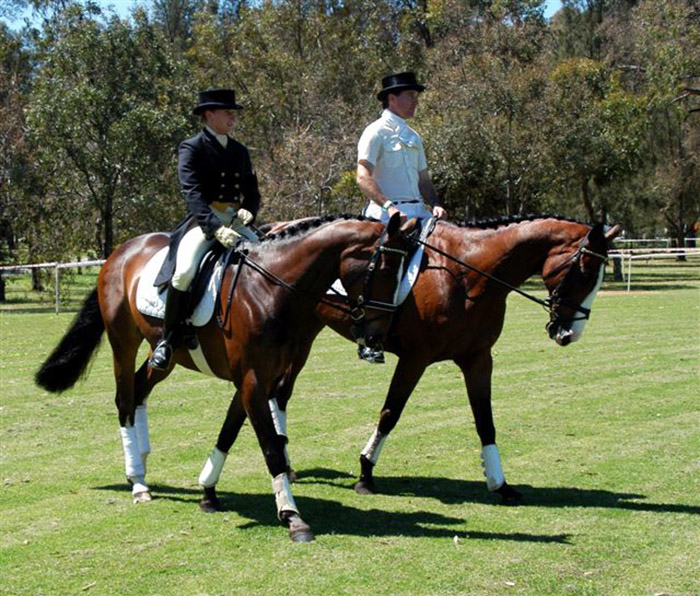
Matt is great at analysing situations, and in his critique of Nat’s test he found lots of little areas where she and Rex could improve their marks. Like the big walk:
“In the extended walk, you really want to get his poll down as low as the withers. You can see on the video, he could do with a little bit more reach, and when you get more reach, he’ll come through a little more in the back and be overstepping. That is what the judges are really looking for, the horse that is over-printing with its hind legs. Sometimes even if you don’t get the overstep, you can at least produce a shape where the horse is stretching down at the poll, nose out just a whisker so the nose remains on the vertical, to make it look as though he is at least trying to stretch out- what Nat was doing in the warm up was just a little too high, not enough reach.”
“The other thing I was stressing with Nat’s medium trot and medium canter, was not to let the horse get too long. Although we do want the horse to be expressive and use itself, Nat was letting the horse get a little strung out. I wanted to encourage the horse to keep a slightly shorter frame. I still wanted the horse to cover lots of ground, still be expressive, but not so strung out.”
“Even before I saw the horse, Nat had told me she really had to work quite hard because the horse is a little down hill – so Nat knows that, she knows where she has to go. I would recommend that she works on a higher level of dressage in her work at home. Don’t just practice what is required for the eventing dressage test – do canter half passes, work on canter pirouettes.”
“Once you can do canter half passes and travers into a small circle, try the pirouette. Do the medium trot and medium canters on a circle. In other words don’t stick at what you need to do for the test – work on as high a level as you possibly can.”
“Even if it might be a little rougher, even though it might not be good enough to go and compete at Prix St Georges level, play with that work at home. Then you start to combine all these exercises together. If you were working on a canter for example, you might actually do shoulder-in in the canter, then when you get down to the long side, do a medium canter circle, back to collected canter shoulder in for the rest of the long side. From an eight-metre circle, half pass back to the track, then go counter canter, not a 20-metre circle but a twelve-metre circle – then into an extended canter, pop him back into a collected canter. Then you start blending.”
“Once you feel reasonably established in being able to do each individual exercise, then blend them together, put them back to back to back, so you are always encouraging the horse to use himself a lot more. You have to try and imagine your horse is a Grand Prix dressage horse. You have to work with the poll as the highest point, but every now and then, after ten to fifteen minutes work, whoosh put the nose back down.”
“You should always have that sensation in your hand of the horse looking for the contact, but not leaning onto it. You always want to have the sensation that if you needed to you could put the horse’s head back on the ground – nose six inches off the ground be it walk, trot or canter. Sometimes when you are working very hard to get your horse up in front, you can be a little quick with your half halts and you can back the horse off the bit a little. You’ve got to go there to a degree, but be careful.”
“Sometimes when you are working on your collection, your half halts will be a bit stronger, because you’ve got to go there, you are really encouraging the horse to get up in the air, but sometimes as a side effect, the horse gets a little bit concerned – oh, aren’t I allowed to go down there any more? You have to say, yes I do want you down there, but I want you to use that softness, use that roundness, use that swing through your back, but sit on your arse a bit more.”
“Eventually when the horse is more finely tuned and you start looking for proper self carriage, then instead of relying on the feeling of that reach through our hand, we can rely on the feeling swing in the horse’s back, through our bum. Once we get good enough, instead of telling whether the horse is on the bit because of the feeling in our hand, we should be able to tell whether the horse is on the bit becauseof the feel and the swing we get through our seat.”
“In the test in Adelaide, Nat was doing a good job to keep her horse up in the canter, but he always has that tendency to go a little bit flat. To encourage Nat to go forward in the canter, I kept saying imagine there is a four-foot parallel, think four-foot parallel, four-foot parallel, not just blipping across a little cross rail, I want enough power to jump a four-foot parallel.”
“It is not a major problem – just that he could sit up a little more. It is not as if his head carriage is terrible. It s not bad, but his whole way of going has that tendencyto fall down. When you come back from medium canter to a more working canter, it has got to be not just a loss of revs – it is a change of gear, and when you change gear on a truck, the revs actually increase sometimes. You got to think that the downward change of gear isn’t loss of revs.”
“An exercise I do quite often- we were talking about blending exercises earlier – is extended canter down the long side, bounce it back and STRAIGHT away into that little eight-metre circle and half pass. Always encouraging the horse to engage. It is not just slowing down, it is engaging.”
Matthew was always looking for those little details that make the difference between a good score and a super score: There are lots of little things. In the halt, hold it that bit longer to show the judge you can. It says halt, immobility try to think of holding it for 3, 4, 5 seconds.”
“It wasn’t too difficult to get a handle on Nat’s dressage test, but harder to get a picture of her cross-country work.”
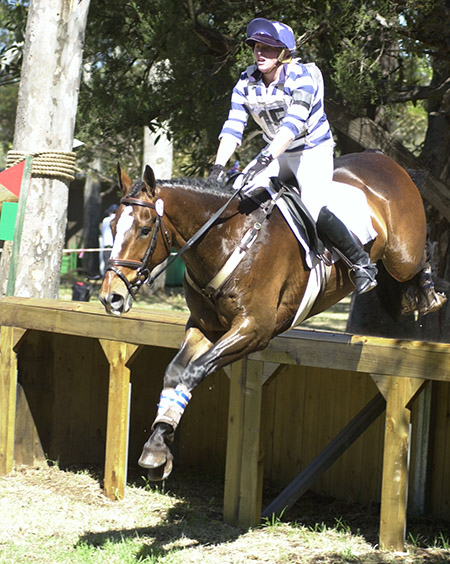
Still Matt was happy with the result: “I didn’t see any of Nat’s cross country round (Matt was riding too). I know that she was only two seconds over, that was one of the best cross country roundsof the day, so that is pretty hard to complain about. But now came the bad bit, round three, the showjumping I did watch your showjumping round. How did you think it went?”
next we talk about the showjumping round
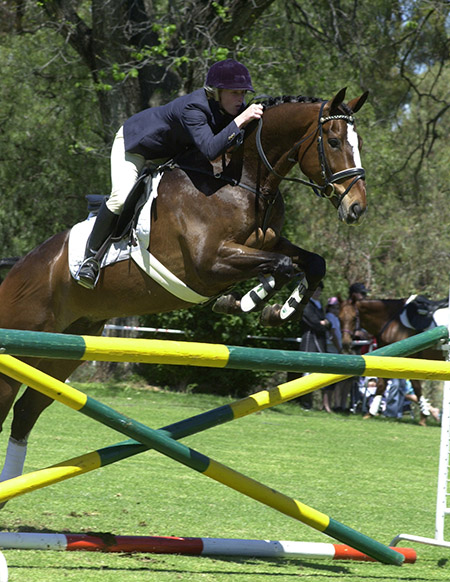
Poor Nat: “I just lost it – I didn’t have enough canter and I just went a bit quiet instead of attacking it. I hoped I’d just be clean instead of riding for it.”
Did you get time faults?
“No.”
“Then you can’t say you didn’t attack it enough. If you didn’t get time faults then your pace was fine. What I reckon you’ve done is just that you’ve missed your spots several times. I know that for sure on the third fence and coming into the treble, you just did not see good enough spots. It happens to everyone, and other horses maybe get away with it. This horse might not be the smartest showjumper so that puts you under more pressure to be accurate.”
“You had two fences where he chipped in a little stride, and two where he was just a bit hollow, and had a rail with his back leg. Whenever a horse has a rail with its back leg, it is a sign that it is not round enough. Two rails down to hollowness, and two down to missing. Neither of those mistakes can be fixed straight away, but half way to solving the problems is understanding what the problems were.”
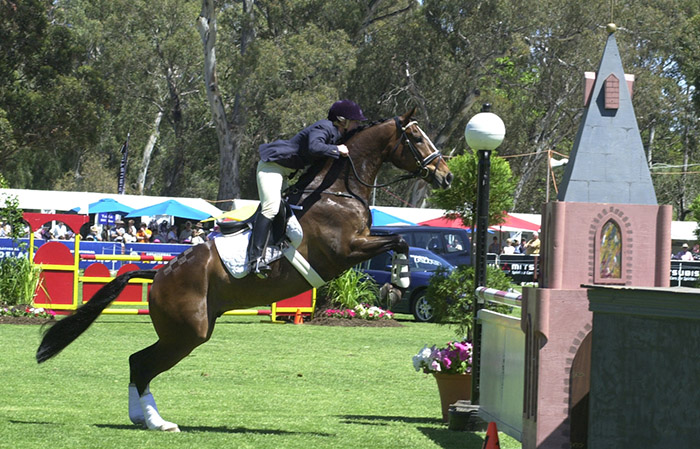
“It wasn’t a bad round, it was a nice smooth round. Don’t call it under-powered – you’ve got to practice seeing your stride, and my lesson is going to concentrate on lines. Not big fences but just giving you exercises that you can go away and play with them and practice riding a three stride, four stride, six stride line, where you have to know how many strides you should be putting in there, and you practice doing those strides.”
“Hopefully you practice seeing your stride from four strides out, three strides out, six strides out, so when you come into a course you will have a better chance of seeing the stride. I’m not talking about straight related lines, I’m talking about bended lines – you’ve got to practice keeping your rhythm and seeing a stride. You’ve got to keep on making sure the horse is covering that 12 foot stride, or if the distance measures a little longer, you are going to have to push the horse out a little more. The point is, that you have to practice riding those lines, still seeing a stride, no matter what external pressures there are – the crowd, the official, the fences – it needs to be so ingrained into your psyche, that you see a stride over and over again.”
“The other problem, rolling the rails from behind, relates to schooling on the flat. And when we watched your dressage test we were saying, crikey, we have to have the horse up a little bit – butin the showjumping weneed to have the horse rounder. You have to do exercises, you have to come in to fences with the horse a bit deeper. Don’t be fooled into thinking that the horse jumps up relative to how high its head is. The horse jumps up relative to how engaged it is, and engagement is relative to roundness. The first step of roundness is getting the horse down lower. The softer and rounder the horse is, the more willing it is to come off the ground and bascule over the top of the fences, and as a result, not drop their back leg.”
“That is a matter of schooling on the flat – but it might also be a matter of giving the horse more freedom. Quite often the horses don’t bascule because a rider hasn’t allowed them enough freedom to bascule. We’ll find that out when we go to the lesson – because you never really know what we are going to find there.”
And that was the story of Natalie’s Adelaide. Tenth after the dressage sitting on a 54.6, then the third fastest cross country of the day, to add only 0.8 time and rocket up into second place going into the final phase. Then four rotten rails in the showjumping to finish in eighth.
Next comes the lesson, watch for it.
Click below to find jumping blood to breed your 4* eventer

